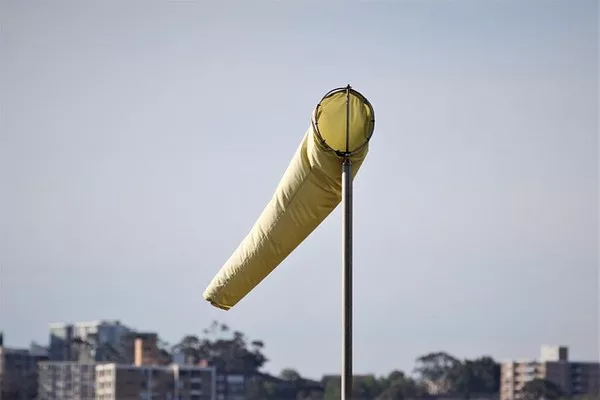In the world of meteorology, measuring wind speed is a fundamental aspect of understanding and predicting weather patterns. One of the most common instruments used for this purpose is the cup anemometer. This simple yet effective device has been in use for over a century, providing accurate and reliable wind speed measurements. In this article, we will delve into the mechanics of a cup anemometer, exploring how it works and why it remains a vital tool for meteorologists, climate researchers, and even in various industrial applications.
The Basic Design of a Cup Anemometer
A cup anemometer typically consists of three or four cups mounted at the end of horizontal arms. These arms are attached to a central vertical axis, and the entire assembly is mounted on a sturdy mast or pole. As wind flows over the cups, they start to rotate, and the speed of rotation is directly proportional to the wind speed. To understand how this rotation translates into wind speed measurements, let’s take a closer look at the underlying principles.
Principle of Cup Rotation
The primary principle behind the functioning of a cup anemometer is the conversion of wind energy into mechanical energy, which can then be measured. The rotating cups are the key to this process.
When wind blows against the cups, it exerts a force on them due to air pressure differences. The side of the cup facing the oncoming wind encounters higher pressure, while the side facing away from the wind experiences lower pressure. This pressure difference generates a net force that pushes the cups in the direction of the wind.
Newton’s second law of motion (F = ma) tells us that force is directly proportional to acceleration. In this case, the cups start from rest and accelerate as the wind pushes them. As they accelerate, they gain rotational speed until the force due to the wind is balanced by the centrifugal force generated by their rotation. At this point, the cups reach a stable, constant rotational speed, which is directly related to the wind speed.
Mathematical Relationship
The relationship between the rotational speed of the cups and the wind speed is described by a simple formula:
Wind Speed (V) = (π * D * N) / (60 * 1000),
where:
V represents the wind speed in meters per second (m/s).
D is the diameter of the circle described by the cup tips (usually measured in meters).
N is the rotational speed of the cups in revolutions per minute (RPM).
This formula highlights the direct correlation between the wind speed and the RPM of the cup anemometer. By measuring the RPM, meteorologists can accurately determine the wind speed.
Calibrating a Cup Anemometer
Calibration is a critical step in ensuring the accuracy of a cup anemometer. Various factors, such as friction, the weight of the cups, and air density, can affect the rotational speed. To compensate for these factors, manufacturers carefully design and calibrate cup anemometers to provide reliable measurements under different conditions.
Calibration involves testing the anemometer at known wind speeds and adjusting its sensitivity or scale factor accordingly. This process ensures that the anemometer provides accurate and consistent readings across a range of wind speeds.
Maintenance and Considerations
While cup anemometers are known for their durability and reliability, they do require regular maintenance to ensure accurate measurements. Maintenance tasks may include lubricating the bearings, checking for debris or obstructions in the cups, and inspecting the anemometer for signs of wear and tear.
Additionally, environmental factors can impact the accuracy of cup anemometers. Variations in air density due to changes in temperature and altitude can affect the device’s performance. To mitigate these effects, corrections may be applied to the measurements, or alternative wind speed sensors, such as sonic anemometers, may be used in conjunction with cup anemometers for more accurate results.
Applications of Cup Anemometers
Cup anemometers find applications in various fields, including meteorology, climatology, environmental monitoring, and industrial settings. Here are some notable uses:
Meteorology: Cup anemometers are a cornerstone of weather stations and are used to measure wind speed in weather forecasting, aviation, and climate research.
Wind Energy: The wind energy industry relies on cup anemometers to assess wind conditions at potential wind farm sites. These measurements are crucial for optimizing the placement and performance of wind turbines.
Environmental Monitoring: Cup anemometers are used in environmental monitoring to assess air quality and dispersion of pollutants. They help in understanding how wind patterns affect the distribution of airborne particles and gases.
Industrial Applications: In industrial settings, cup anemometers are used for tasks like monitoring ventilation systems, assessing air quality in factories, and ensuring safe wind conditions for outdoor activities.
Conclusion
The cup anemometer, with its simple yet effective design, remains a crucial instrument for measuring wind speed across various fields. By harnessing the principles of fluid dynamics and Newtonian physics, it provides accurate and reliable wind speed measurements, making it indispensable for meteorologists, climate researchers, and many other professionals. As technology continues to advance, cup anemometers will likely remain a staple in the arsenal of tools used to understand and harness the power of the wind.

